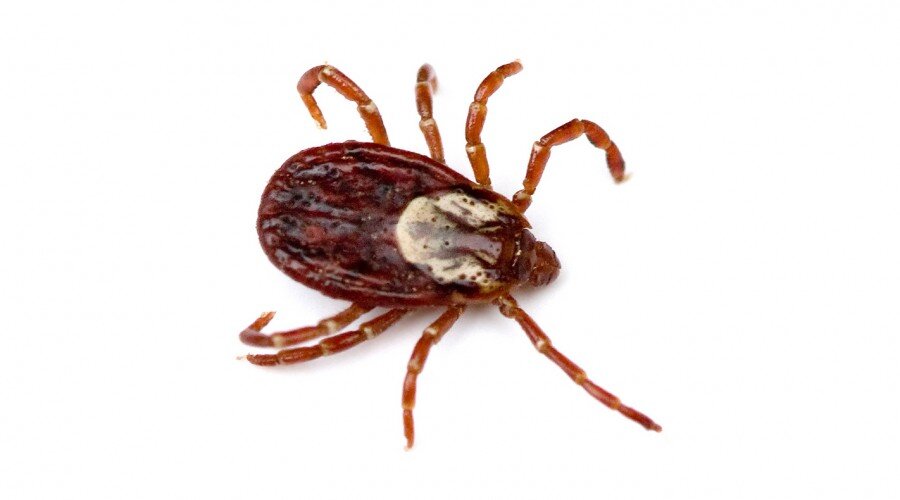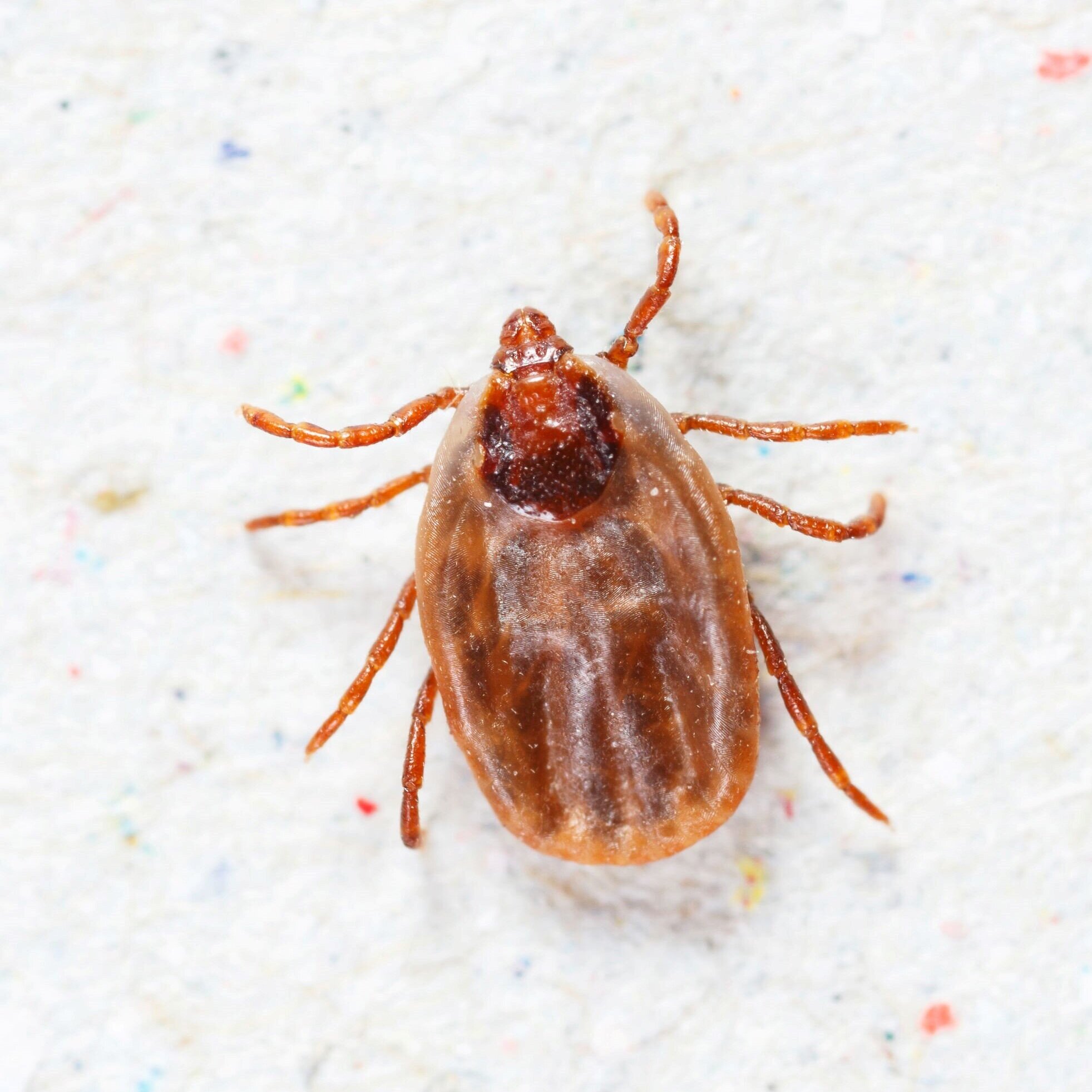Introduction to ticks in Florida
What are the common types found here?
American and Brown Dog Ticks names come from the fact that they are only found in North America and that domestic dogs are the favorite host of the adults. Although not a structural pest, they are commonly found on dogs and readily attacks humans. It is of medical importance because it vectors the causal organisms of Rocky Mountain spotted fever and tularemia, and also causes tick paralysis.
American Dog Tick
Brown Dog Tick
Biology
The engorged female drops off the host and seeks a sheltered place to lay her eggs. Over two to four weeks she lays egg masses totaling 4,000-6,500 yellowish-brown eggs, and then dies. Egg hatch usually occurs in 36-57 days. Unfed larvae actively crawl about seeking a host. They can survive for up to 540 days unfed.
Adults crawl up on grass or other low vegetation and wait for a host to pass. After both sexes have fed, females are completely engorged in about 10.5 days (range 5-27 days), mating occurs on the host. Males continue to feed but females drop off to lay their eggs. Females require a 3-58 day preoviposition or waiting period before egg laying begins. Unfed adults can survive for about 2-3 years (up to 1,053 days). The entire life cycle (egg to egg) requires from 3 months to more than one year, and both larvae and nymphs can overwinter. In the northern states, a 2-year life cycle may be more common.
In the eastern United States, American dog ticks are the primary vector of Rocky Mountain spotted fever (RMSF) which is caused by the rickettsial bacterium Rickettsia rickettsia. They transmit RMSF from small animals. It is a severe acute infectious disease of the small peripheral blood vessels whose characteristic symptom is a rash that develops in 2-5 days. Mortality in humans is 20% or more.
These ticks also transmit tularemia which is caused by the bacterium Francisella tularensis. It is transmitted from rabbits, meadow mice, ground squirrels, sheep, beavers, coyotes, and various game birds. Symptoms include chills and fever, prostration, an ulcer at the tick-bite site, and tender, swollen lymph nodes.
In addition, American dog ticks can cause tick paralysis which is caused by fluids injected by the tick during feeding, but requires at least 5-6 days of feeding for transmission. If the tick is not removed, death may result from respiratory failure; children are particularly susceptible. If the tick is removed, recovery is rapid and usually within 24-72 hours.
Deticking dogs is an important way that Rocky Mountain spotted fever is spread. Handpicking is dangerous because infected tick secretions on the hands can be transmitted via contact with eyes, mucous membranes, etc.
Clements approach to control
Personal Protection: We advise that you keep pant legs tucked into socks or boots, shirts tucked in, and clothes buttoned when in areas such as woods, brush or tall grass. Avoid sitting on logs, stumps, or the ground in brushy areas. Periodically inspect clothing and the body for ticks to remove ticks before they become attached to your skin. If a tick is found attached, remove it with a slow steady pull that will not break off the mouthparts and leave them in the skin. It is best to use forceps whose tips are placed on or just behind the mouthparts. If fingers are used, place the fingernails of thumb and index finger on or just behind the mouthparts but be sure to wash thoroughly with soap and water afterwards. Be sure to clean the attachment area. Liberal use of tick repellents is helpful, including application to clothing.
Habitat Modification: Keep the grass cut to 3" (7.5 cm) or less; this also reduces rodent habitat. Trim back vegetation along trails, paths, and yard edges. Remove debris and ground cover to discourage rodents.
Recurring Pesticide Applications: In infested areas, recurring liquid insecticide applications are advisable. We concentrate on the areas most likely to harbor ticks such as along covered paths, trails, and brush lined sidewalks, and the yard-woods interface.
Schedule a free inspection
When you meet with our team, we’ll greet you with a smile, address your needs and answers any questions. No pushy sales person or high pressure tactics. For many treatments, we can even start them at the time of your consultation.





